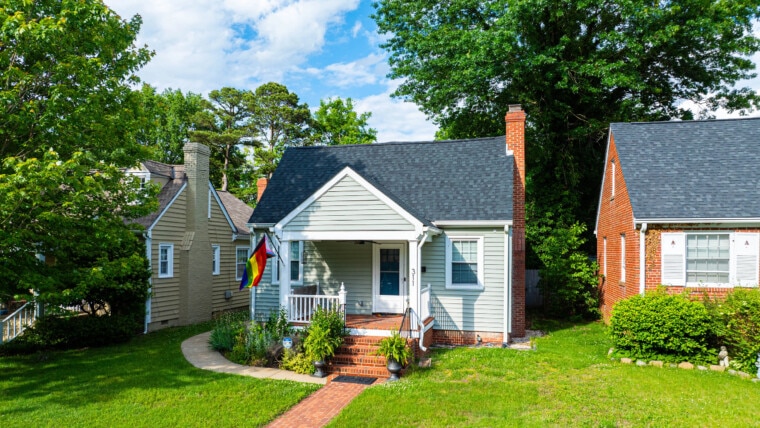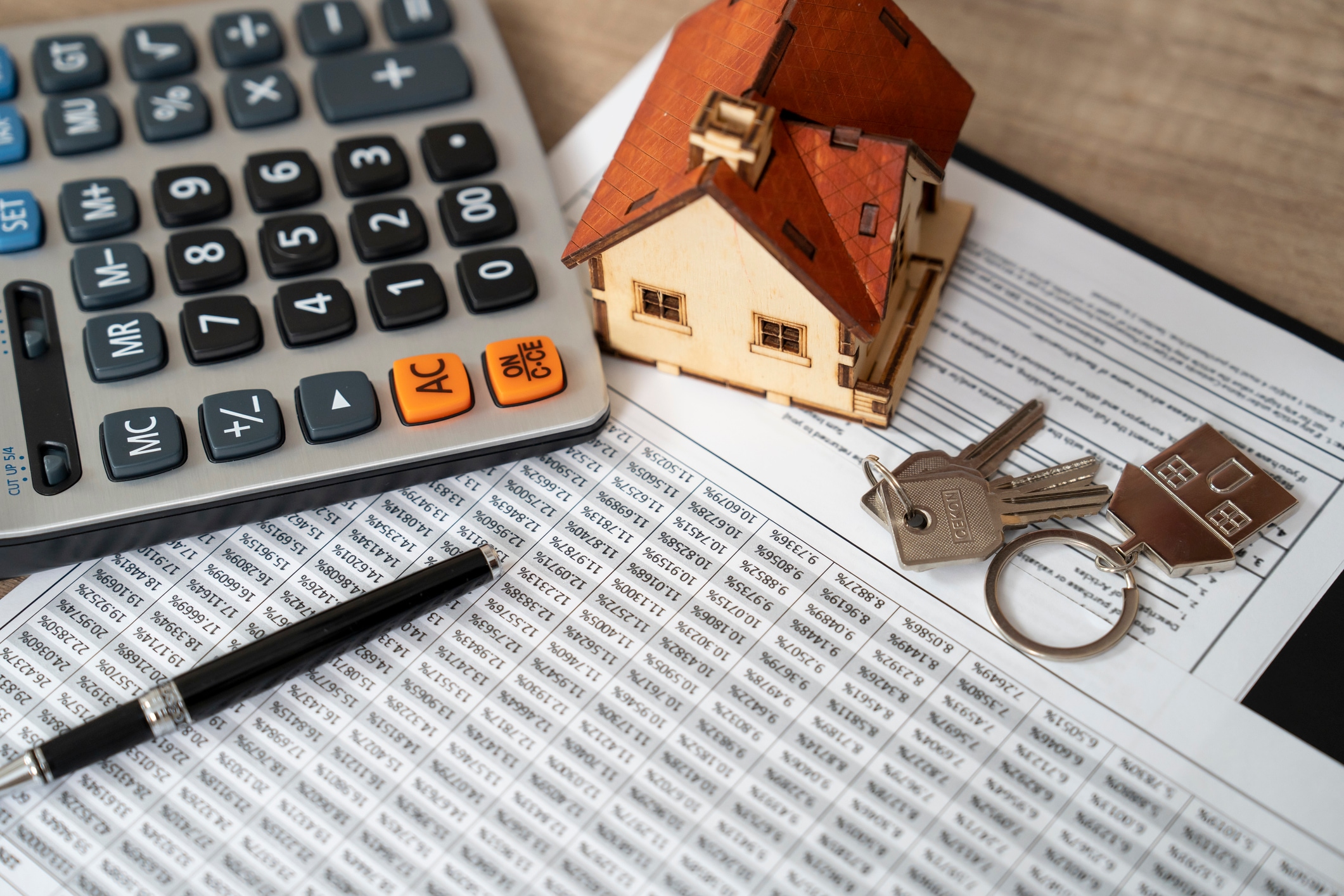Table of Contents:
- Historic vs. Historical
- What Is the National Register of Historic Places?
- Is a Historic Home a Good Investment?
- Are There Rules for Historic Homes?
- Difficulties When Buying an Old House
- What to Look for When Buying a Historic Home
Have you always dreamed of owning a historic house? There’s just something about an elegant Victorian with lacy gingerbread trim and wrap-around porch. Or maybe it’s the gabled roofs and distinctive columns of Craftsman homes that spark your imagination. Perhaps it isn’t the style that inspires you, but the layers of history in the house that you can peel back like sheets of wallpaper. Each new layer represents a moment in time long forgotten.
Of course, old houses have unique challenges. And if you’ve ever tried to remove decades of wallpaper from an aging home, it isn’t as poetic as revealing long-forgotten memories of previous homeowners. It’s difficult, time-consuming, and monotonous. Layers of purple, gold, flowers, birds, toile, damask … let’s face it, some styles are better left in the past. On the other hand, you could uncover a gem, such as a stunning tapestry-inspired wallpaper from the early 18th century. Old homes contain many secrets, and you never know what you’ll uncover when you purchase one.

Historic vs. Historical
You find a house that was built in 1902. It’s definitely old, but is it historic? There’s a notable difference between historic and historical. Any house built more than 50 years ago could be considered historical because of its age. It has no significance other than when it was built. A historic home has some important feature or relevance that makes it special. Perhaps it’s connected to a significant event, such as being a place where a former President once visited or having a connection to a major battle. Or perhaps it was built by a famous architect and is significant for that reason.
If you purchase a house that you believe should be considered historic, you can apply for the home to be added to the National Register of Historic Places. The process is different depending on your state, so you’ll want to review your state’s nomination process. Houses are evaluated based on their age (the home must be at least 50 years old) and historic context related to one of the following criteria:
- Association with a major past event or events
- Relationship to significant people from the past
- Distinctive characteristics or architectural style that represent the work of a master or have high artistic values
- Has yielded or may yield information important in prehistory or history
If a house is registered as historic, there are certain changes you may not be able to make, depending on your local historical society. For example, you probably won’t be able to build an addition to increase the square footage. You may be limited to certain paint choices, and it could be difficult to alter the house’s historical features such as the windows or shutters. The rules may be different depending on where you live, but you might need to submit an application and have the house evaluated before you can do any renovation or remodeling. Check with your local historical society before doing any work on the home to learn what the rules are in your area.
What Is the National Register of Historic Places?
In 1966, the National Register of Historic Places was created to identify historic properties as part of the National Historic Preservation Act. This act was a response to what happened after Word War II, when entire neighborhoods were demolished in the name of progress. The galvanizing event was the demolition of the original Penn Station in New York City. Completed in 1910, the building was a beautiful example of Beaux-Arts architecture. It was demolished between 1963 and 1968, and the loss of this one-of-a-kind structure fueled the need to protect the nation’s most treasured buildings.
The National Park Service manages the National Register with the sole purpose of identifying historic structures. Once a property is added to the list, the preservation of the building typically falls to state and local preservation societies. The law requires states to take responsibility for historic sites in their jurisdictions. As a result, each state has a historic preservation office and is required to complete an inventory of important sites.

Is a Historic Home a Good Investment?
While there may be restrictions around the types of changes you can make to your historic home, there are tax incentives and grant programs to help you maintain and renovate your house. If your home is listed on the National Register, you could qualify for a tax credit to help cover rehabilitation costs. Your state may offer additional tax credits.
Historic homes tend to retain their value, even when property values in your area are on the decline. Since historic properties are unique, your home will likely increase in value, especially if you take good care of it.
If your house is part of a historic district, there may be a lot of interest and involvement from the community, at both the local and state level. Historic districts are often sheltered from new construction to retain their aesthetic appeal. The district may be highlighted during local events like holiday celebrations and walking tours. Your neighborhood and even your home may be featured on the city’s website to attract new residents and visitors to the area. There’s a sense of pride that comes with owning a piece of the town’s history that can’t be overlooked.
Are There Rules for Historic Homes?
It’s important to remember that the National Register is basically a list of historic properties that’s maintained by the National Park Service. The National Register doesn’t set any rules or regulations for the homes. As far as the National Park Service is concerned, it’s your house, and you can remodel, renovate, sell, or even demolish it. However, altering the home could result in it being removed from the National Register. Also, if you receive federal funding or licensing for the home, there could be rules that apply.
However, while the National Park Service doesn’t regulate what you do with the house, state and local historical societies often have restrictions on remodeling and renovating to ensure the historic preservation of the home, so call the state historic preservation office (SHPO) and find out what the guidelines are before making any changes to the home. To make sure the work is done correctly and to maintain the historic integrity of the house, find a contractor who specializes in historic home restorations. The SHPO should be able to give you suggestions if you need them.

Difficulties When Buying an Old House
Historic homes maintain their value, give you a sense of pride, and connect you to the history of your community. You may even get financial assistance when renovating your historic house. However, you may face some challenges when buying an old house, whether it’s historic or not.
In addition to following SHPO guidelines, renovations to a historic house will take longer and will probably cost more. This is because it takes more effort to find and purchase historically accurate materials, and the work must be done correctly, especially if it impacts the home’s historical integrity.
Even if your home isn’t historic, old houses often need frequent repairs simply because of age. You may encounter pipes that are decades old and in need of replacement, or perhaps your home still has knob-and-tube wiring that you’ll have to deal with. Knob-and-tube wiring was used from about 1880 to around 1940, so if the house you’re considering buying was built within that time frame, you’ll want to check the wiring.
The home might still contain harmful materials such as asbestos or lead paint, both of which were common before 1978. Older homes are also at greater risk for radon and carbon monoxide, so you’ll want to test for radon and install carbon monoxide detectors on each floor of your home.
Since older homes might shift and settle over time, you could encounter issues with the foundation. This might show up as wall cracks, broken tiles, or uneven floors. Fixing the foundation could be inexpensive or budget-busting, depending on how serious the problem is and what it will take to fix it.
Another difficulty you may have when purchasing an older house is smaller spaces. The terms “open concept” and “en suite bathrooms” are relatively new. The rooms of yesteryear leaned more toward cramped, especially the bedrooms. People had fewer belongings, so they didn’t require a lot of storage. As a result, closets were much smaller and there were fewer of them.
You may find many older homes with little kitchens, only one bathroom, and low ceilings. You might even discover some oddities, like stairs that don’t lead anywhere or fireplaces that no longer function. An old house likely had several owners, and those owners may have added on, remodeled, or even divided the house into separate units. Undoing all of that could take time and money, especially if the changes were done improperly.
What to Look for When Buying a Historic Home
After weighing all the pros and cons, you’ve decided that a historic home is right for you. There’s just something about the expert craftsmanship, attention to detail, and history of old houses that draw you to them. But before you start searching for your new (old) home, there are some things you’ll want to consider. As with any home, you’ll want to first look at the location, the square footage, and the financial implications of buying the home. With an old house, there are a few additional things to check:
- The foundation: keep an eye out for cracks in the walls, doors and windows that don’t shut properly, and uneven floors.
- Pests: Make sure you look for signs of pests under the sinks, in the corners, and in crawl spaces and attics. Bats, rats, mice, and insects may have taken up residence in the home, especially if it has been empty for a while.
- Mold: Look for signs of mold on the ceilings and around the windows. Old pipes often leak, and if those leaks have gone unchecked, the house could have a mold issue.
- Insulation: Older houses are often drafty, so save yourself some money on your heating and cooling bills by making sure the house is properly insulated.
- Electrical issues: Check the outlets to make sure they have three holes and not two. Older homes might not have properly grounded outlets. While you’re at it, make sure the house doesn’t have knob-and-tube wiring.
- The roof: Are there missing shingles? Does the roof show signs of age? Is the chimney crumbling?
- Plumbing: Look for leaks, signs of water damage, and the water source. Does the home have a well? If so, is it a modern well? Older, hand-dug wells could be a source of contaminants.
- The history: While it may not bother you, if your house has a reputation for being haunted or creepy, it could impact your ability to sell later.
To make sure the house is free of lead paint, asbestos, and radon, get the home inspected. You might even want to get specialists to check things like the septic or electrical system. Look for inspectors who specialize in older homes since they’ll have a better understanding of the issues older houses often present. If the inspector finds a structural issue, ask an engineer to examine the problem before you buy.
While there are things you’ll want to check, most old homes are soundly built. There’s a reason 100-plus-year-old houses are still standing. Older homes were built with plaster and lath, which was stronger than the drywall typically used today. Builders took their time, using hand-crafted materials and paying close attention to detail. They used old-growth wood, which was dense and heavy. Older houses were truly built to last, so you can expect to enjoy your historic home for many more years to come.
Hi, I'm Alecia, the Content Marketing Manager here at Homes.com. I enjoy playing video games with my sons, reading mystery novels, and trips to the beach. Follow me on Twitter at @apirulis.












